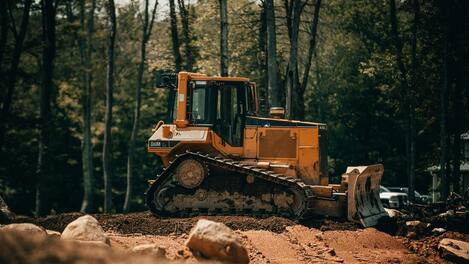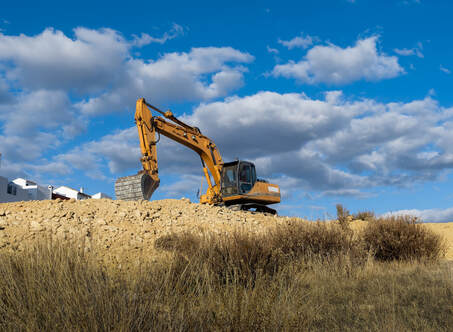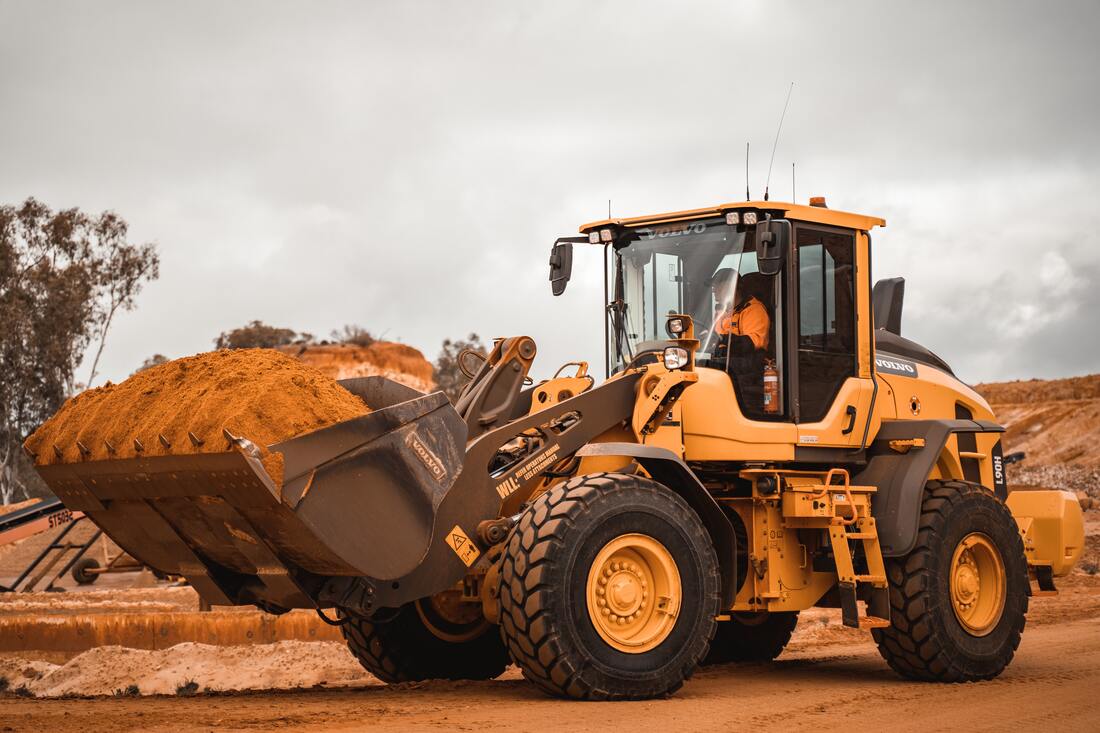Clearing Excavation
If you're planning on doing any construction work on your property, it's important to clear the area first. This involves removing any unwanted objects that could get in the way of your construction project. Clearing can be a big job, so it's important to hire a professional excavating company to do the work for you.
Modesto Excavation Experts has all the right equipment and experience necessary to quickly and efficiently clear your property. They can also grade the land, which is important for ensuring that your construction project is completed successfully. "Clearing" refers to the act of removing unwanted objects on a property that later will be constructed. Good examples for this may include extracting brush, removing stumps, crushing rocks into smaller bits, or even mulching trees. Excavation is an incredibly important factor in land clearing. In clearing excavation there is land grading, digging out trenches or ditches, roadwork, and much more involved. Smaller construction projects may include land clearing, but bigger arrangements will require clearing the most. However, requirements will be different for each project. The contractor's responsibility is to make a clear assessment with a discussion before any further action. |
|
Stripping / Cut and Fill Excavation
Cut and fill excavation, also known as “stripping excavation” is often confused with topsoil excavation. Though the practices are entirely contradictory to the trained professionals. The difference is solely in technique and reasoning. Topsoil excavation starts by digging a shallow layer to remove different assets. Stripping excavation is known for clearing large sums of land before starting any construction or engineering. Though not always necessary, some states or construction teams might require grading previous to the stages of development. Grading could be another vital part of this operation and will have to be accessed by the team.
Resources have to be extracted from the ground to flatten and strip a piece of land. These common earth materials include rocks, topsoil, gravel, sand, murk, and other natural resources.
After the cut and fill excavation undertaking strips layers from the earth; the surface becomes smooth and the lot is now leveled for a structural foundation for construction. Stripping excavation is not limited to constructing buildings but is utilized for other forms of building. Cut and fill excavation is diverse enough for almost any project at hand. It’s common to see stripping excavation for the needs of roadways, railroads, canals, and embankments.
Handling with “kid gloves” is mandatory by the crew, they have to proceed carefully making an effort towards all guidelines and regulations for the job in the form of mapping, erosion, or sediment practices. As always, excavation practices should be handled by experts, and is not advised to be tried at home due to precautionary reasons.
After the cut and fill excavation undertaking strips layers from the earth; the surface becomes smooth and the lot is now leveled for a structural foundation for construction. Stripping excavation is not limited to constructing buildings but is utilized for other forms of building. Cut and fill excavation is diverse enough for almost any project at hand. It’s common to see stripping excavation for the needs of roadways, railroads, canals, and embankments.
Handling with “kid gloves” is mandatory by the crew, they have to proceed carefully making an effort towards all guidelines and regulations for the job in the form of mapping, erosion, or sediment practices. As always, excavation practices should be handled by experts, and is not advised to be tried at home due to precautionary reasons.
Borrow Excavation
|
This may not come as a shock to many but the goal of “Borrow Excavation” is to remove sand, dirt, crushed stone, and other components to fill your site from an outside location.
This earthwork is generally used when it's difficult or impossible to recycle materials removed previously from the site. In some cases, the materials may be obtained as unsafe or hazardous for use. Borrowing is also cultivated when installing grading or an embankment isn’t an option. Another utilization of the nicknamed “borrow pit” or “sandbox” is for mixing materials such as concrete. |
The team investigates an area to determine suitable materials from the project at hand. Tests run through a lab and will help the crew find available elements and their ability to withhold compaction moisture, density control, water contents, and grain size distribution. Other factors to consider:
The common excavating team is making the most of this method for filling, leveling, and backfilling. Instead of digging material, the crew fills areas with the borrowed resources. There are proper design criteria involved when dealing especially with areas of standing water that need to be evaluated and considered by the contractors.
The compromised borrow pits get excavated and then worked into for stabilizing side slopes and other jeopardizing conditions and then are provided with the necessary drainage to prevent ponding and standing water.
- The components of gypsums or salts
- The approximate amount of the desired usage for each material
- Contaminated ground or other natural materials
- Water levels around the borrow pit
The common excavating team is making the most of this method for filling, leveling, and backfilling. Instead of digging material, the crew fills areas with the borrowed resources. There are proper design criteria involved when dealing especially with areas of standing water that need to be evaluated and considered by the contractors.
The compromised borrow pits get excavated and then worked into for stabilizing side slopes and other jeopardizing conditions and then are provided with the necessary drainage to prevent ponding and standing water.
Unclassified Excavation

Unclassified excavation and classified excavation, what is the difference between the two? Classified excavation is when the excavation crew has a clear idea of the components in the ground. Unclassified excavation differs because of the various or unknown materials extracted from a single area.
For example, if the excavation crew started digging on a property with a mixture of ground components to work with, they would call that unclassified excavation.
Not only the categories of resources but also textures, stubborn objects, or other forms of debris can be considered unclassified. In most cases, it’s hard to cipher or distinguish between different forms of soil removed from the lot.
Discarding surplus, unusable and unclassified matters will most likely be covered in the project details by your contractors. Unclassified materials are removed at the same time, regardless of their nature. The supply is handled with proper precautions, the soil may contain contaminants or other harmful ingredients.
The land may need to be backfilled depending on the plan in place. Also, appropriate grading may be a part of the procedure. Grading and backfilling vary between contracts and construction crews. The details will need to be discussed with the contractors in charge of the labor administration.
For road unclassified excavation, the crew may undercut and fill any empty places with concrete during paving to maintain a minimum thickness. Another method is they may fill desolate spaces with pulverized rock instead. Different precautions are due to state laws, economic factors, or the preference of the team.
For example, if the excavation crew started digging on a property with a mixture of ground components to work with, they would call that unclassified excavation.
Not only the categories of resources but also textures, stubborn objects, or other forms of debris can be considered unclassified. In most cases, it’s hard to cipher or distinguish between different forms of soil removed from the lot.
Discarding surplus, unusable and unclassified matters will most likely be covered in the project details by your contractors. Unclassified materials are removed at the same time, regardless of their nature. The supply is handled with proper precautions, the soil may contain contaminants or other harmful ingredients.
The land may need to be backfilled depending on the plan in place. Also, appropriate grading may be a part of the procedure. Grading and backfilling vary between contracts and construction crews. The details will need to be discussed with the contractors in charge of the labor administration.
For road unclassified excavation, the crew may undercut and fill any empty places with concrete during paving to maintain a minimum thickness. Another method is they may fill desolate spaces with pulverized rock instead. Different precautions are due to state laws, economic factors, or the preference of the team.

